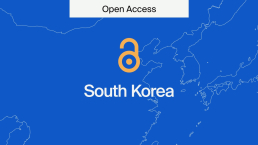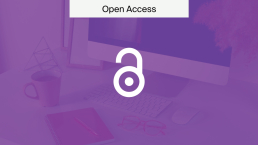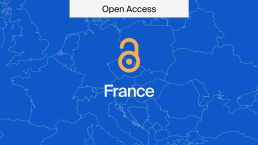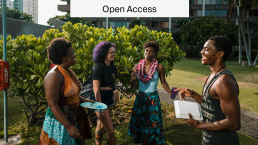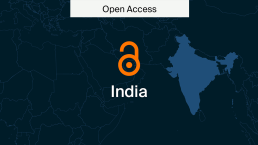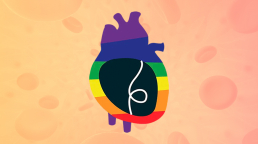
Healthcare Disparities in the LGBTQ+ Community
This year will mark 51 years since the first official Gay Pride Rally was held in London on the 1st of July, 1972. For Pride Month, we will be looking into some of the issues still faced by the LGBTQ+ community and how MDPI research is drawing attention to them. In particular, we will be looking at healthcare disparities in the LGBTQ+ community.
In essence, healthcare disparities are defined as a situation in which certain communities are placed at a disadvantage when trying to access or receiving healthcare compared to if they were not members of these communities. Examples of this include discrimination, a lack of tailored care, heightened concerns about gaining access to healthcare, and a negative experience when receiving healthcare.
The 2017 National LGBT Survey
The 2017 National LGBT Survey had over 108,000 respondents who shed light on current healthcare situations from the perspective of LGBTQ+ community members. Of the participants: At least 16% described their experience as negative due to their sexual orientation. And at least 38% had a negative experience due to their gender identity, when accessing or attempting to access public health services.
A further 51% had had to wait too long. A total of 27% were worried, anxious, or embarrassed. And 16% felt their general practitioner was unsupportive when accessing or attempting to access mental health services.
Eighty percent of trans participants had difficulty or long waiting times when accessing or attempting to access gender identity clinics.
Below are some of the MDPI resources contributing to accumulating evidence and carrying out investigations with the ultimate aim of overcoming these disparities:
Teaching LGBT+ Health and Gender Education to Future Doctors
Teaching LGBT+ Health and Gender Education to Future Doctors: Implementation of Case-Based Teaching in IJERPH highlights an important perspective of LGBTQ+ community members regarding healthcare disparities when accessing healthcare: the competence of medical care may be hindered due to the insufficient knowledge of or discrimination from medical personnel.
However, if they do not disclose their sexuality and gender identity to avoid these adverse reactions, this can also negatively impact the quality of care they receive, e.g., misdiagnosis of a condition. This dilemma puts immense pressure on these patient groups, and their mental health may suffer as a result. The study recruited two teachers and nineteen medical students to assess the effectiveness of case-based gender and LGBTQ+ healthcare teaching.
Narrative cases for LGBTQ+
Narrative cases were presented, i.e., the life and medical experiences of LGBTQ+ individuals, which gave rise to opportunities for active participation and discussions of the importance of addressing LGBTQ+-specific issues in psychiatric clinical education between the teachers and students.
This encouraged students to link medical knowledge and clinical experience, enabling them to apply their knowledge to specific clinical situations. This method of teaching greatly improved students’ knowledge regarding disparities in healthcare and their impact on the physical and mental health of those affected.
Need for Inclusive Consideration of Transgender and Gender Diverse People in E-Health Services
In Need for Inclusive Consideration of Transgender and Gender Diverse People in E-Health Services: A Systematic Review in JCM, the authors recognized the fact that transgender and gender-diverse (TGD) individuals rely on the internet to find health information.
Using reputable databases, they conducted a review on e-health approaches to improving healthcare for the LGBTQIA+ community.
These included TGD-specific health services and training for healthcare professionals. These tailored e-health services were found to improve health outcomes for TGD individuals and to help healthcare professionals improve their expertise in this area of healthcare, although research was highly limited. The authors note that this community is still an underrepresented group in e-health research.
They recommend that researchers conduct their own e-health pilot projects to improve trans healthcare and that e-health services consider a TGD-specific design and regular updates of their content in accordance with people’s needs in order to create a safe, trustworthy, and low-cost setting that TGD individuals can access remotely, which has the ability to complement standard care.
The authors state,
“This opens the door for intersectional perspectives and the reduction in stigma through marginalization regardless of gender identity or sexual orientation”.
Addition of Care for Transgender-Related Patient Care into Doctorate of Pharmacy Curriculum
Addition of Care for Transgender-Related Patient Care into Doctorate of Pharmacy Curriculum: Implementation and Preliminary Evaluation in Pharmacy addresses the increase in transgender and gender-diverse individuals seeking medical care in the US and how pharmacotherapy can contribute to providing them with the correct care.
In the study, three-hour educational material was added into the curriculum of a Doctorate of Pharmacy, which included cultural, empathy, and medical aspects, before providing students with a survey to assess the effectiveness of the learning session.
Students self-assessed their confidence in providing competent care to transgender individuals: Before the learning session, the median confidence level was 4 out of 10. After the session, this rose to 7 out of 10.
The results of this study show that introducing transgender- and gender-diverse-specific educational material into the Doctorate of Pharmacy curriculum significantly increases students’ confidence in their ability to provide the right care for these patients.
Trends in Health Care Access/Experiences and Healthcare Disparities
In Trends in Health Care Access/Experiences: Differential Gains across Sexuality and Sex Intersections before and after Marriage Equality in IJERPH, the influence of LGBTQ+ legislation on health care access inequities in sexual minority adult groups is analyzed. More specifically, the study focuses on the 2015 national marriage equality ruling in the United States.
The Association of American Medical Colleges biannual Consumer Survey of Health Care Access was used to access population-based data on healthcare access and satisfaction based on sexuality and sex from 2013 to 2018. And changes in trends in relation to the 2015 marriage equality ruling were identified.
It was found that healthcare access and satisfaction from 2013 to 2018 varied significantly across sexual identities, with increasing trends for gay men, bisexual women, and heterosexual men and women; however, gay men were the only group to experience a significant increase after the marriage equality act, and bisexual men showed a significantly decreasing trend.
This shed light on the disparities in how national marriage policy has impacted different sexual minority groups. The authors suggest further investigation into how marriage equality affects healthcare-seeking behaviors and cost barriers to healthcare.



